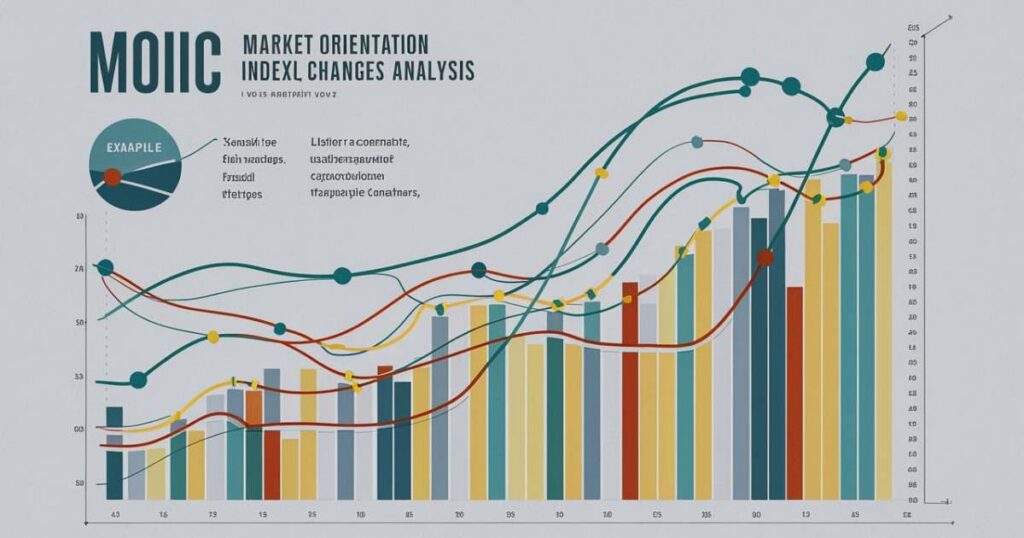MOIC stands for Multiple on Invested Capital. It’s a simple way to measure how much an investment has grown. This guide will explain MOIC, how to calculate it, and why it matters. We’ll cover everything you need to know about this important financial tool.
“MOIC Mean: A Comprehensive Guide to MOIC” is your key to smarter investing. Whether you’re new to finance or an experienced investor, this guide will help you. By understanding MOIC, you can make better choices with your money and investments.
MOIC is popular in private equity and venture capital. It shows how many times you’ve multiplied your initial investment. Unlike some complex metrics, MOIC is easy to understand. It gives a quick snapshot of an investment’s performance. Many investors use MOIC alongside other tools to get a full picture of their investments.
What is MOIC?
MOIC, or Multiple on Invested Capital, is a crucial investment metric that helps investors gauge the profitability of their ventures. It’s a simple yet powerful tool in the world of financial performance measurement, especially popular in private equity and venture capital circles. MOIC tells you how many times you’ve multiplied your initial investment, offering a clear picture of your investment success.
Think of MOIC as a magnifying glass for your investment profitability. It zooms in on the raw multiple of your returns, stripping away the complexities of time and risk adjustments. This straightforward approach makes MOIC a favorite among investors who want a quick, intuitive grasp of their investment’s performance.
Whether you’re a seasoned pro or just dipping your toes into the investment world, understanding MOIC can give you a competitive edge in assessing deals and managing your portfolio.
MOIC Formula

The MOIC formula is beautifully simple, which is part of its charm in the complex world of financial ratio analysis. At its core, MOIC is calculated by dividing the total value returned to investors by the total amount invested. This total value includes both realized gains (money already returned to investors) and unrealized gains (the current value of investments not yet sold).
Let’s break it down:
MOIC = (Realized Value + Unrealized Value) / Total Amount Invested
This formula captures the essence of investment return ratio, giving you a clear multiplier of your initial capital. For example, an MOIC of 2.5x means you’ve turned every dollar invested into $2.50. It’s this intuitive interpretation that makes MOIC so valuable for quick investment evaluation and comparison across different opportunities.
How to Calculate MOIC?
Calculating MOIC is straightforward, but it requires accurate data on your investments. Let’s walk through the process step-by-step, using a real-world example to illustrate the capital return analysis.
Imagine you invested $1 million in a startup three years ago. Today, the company has paid out $500,000 in dividends, and your stake is valued at $2 million. Here’s how you’d calculate the MOIC:
- Realized Value: $500,000 (dividends paid)
- Unrealized Value: $2,000,000 (current stake value)
- Total Amount Invested: $1,000,000
MOIC = ($500,000 + $2,000,000) / $1,000,000 = 2.5x
This MOIC of 2.5x indicates that you’ve multiplied your initial investment by 2.5 times. It’s a strong indicator of investment success, showing significant capital gains.
What is a Good MOIC?
Determining a “good” MOIC depends on various factors, including the investment type, risk level, and time horizon. In general, private equity firms often target an MOIC of 2.0x to 4.0x for their investments. However, in high-risk, high-reward sectors like venture capital, MOICs can soar much higher for successful investments.
Consider this rough guide:
- 1.0x – 1.5x: Below average
- 1.5x – 2.0x: Average
- 2.0x – 3.0x: Good
- 3.0x – 4.0x: Very good
- 4.0x+: Excellent
Remember, these are general guidelines. A “good” MOIC should always be evaluated in the context of your specific investment strategy and risk tolerance. It’s also crucial to consider the time frame – a 2.0x MOIC achieved in two years is generally more impressive than the same MOIC achieved over ten years.
MOIC vs IRR
While MOIC gives you a straightforward profit multiplier, IRR (Internal Rate of Return) offers a different perspective on investment profitability. IRR takes into account the time value of money, providing an annualized rate of return. This IRR vs MOIC comparison is crucial for a comprehensive investment evaluation.
MOIC shines in its simplicity and intuitive nature. It tells you how many times you’ve multiplied your money, regardless of how long it took. IRR, on the other hand, gives you an annualized return rate, which is particularly useful for comparing investments with different time horizons.
Here’s a quick comparison:
| Aspect | MOIC | IRR |
| Time consideration | No | Yes |
| Ease of calculation | Simple | Complex |
| Intuitive understanding | High | Moderate |
| Useful for quick assessments | Yes | No |
| Accounts for investment duration | No | Yes |
Both metrics have their place in investment analysis. MOIC is great for quick assessments and comparing absolute returns, while IRR is essential for understanding the time-adjusted performance of investments. Using both in tandem provides a more complete picture of investment success.
MOIC Returns Analysis with Example

Let’s dive into a practical MOIC returns analysis using a hypothetical private equity investment. This case study will demonstrate how MOIC can inform investment decision-making and exit strategy.
Case Study: Tech Innovators Inc.
A private equity firm invested $10 million in Tech Innovators Inc. five years ago. They’ve received $2 million in dividends so far, and are considering two exit options:
- Sell now for $30 million
- Hold for two more years with a projected exit value of $40 million
Let’s calculate the MOIC for both scenarios:
Scenario 1 (Exit now): MOIC = ($2 million + $30 million) / $10 million = 3.2x
Scenario 2 (Hold for two years): MOIC = ($2 million + $40 million) / $10 million = 4.2x
At first glance, holding for two more years seems more attractive with a higher MOIC. However, this is where combining MOIC with other metrics like IRR becomes crucial. The IRR might show that the annualized returns are actually higher in Scenario 1, depending on the time value of money.
This analysis showcases how MOIC can guide investment exit strategy decisions, but also highlights the importance of using multiple investment metrics for a comprehensive evaluation.
FAQ’s
Can MOIC be negative?
No, MOIC cannot be negative. The lowest it can go is 0x, which would indicate a total loss of invested capital.
How often should MOIC be calculated?
MOIC should be calculated regularly, typically quarterly or annually, to track investment performance over time.
Is a higher MOIC always better?
Generally yes, but it’s important to consider the time frame and risk taken to achieve that MOIC.
How does MOIC relate to cash-on-cash return?
MOIC is similar to cash-on-cash return but includes both realized and unrealized gains, providing a more comprehensive view of total return.
Can MOIC predict future performance?
MOIC is a historical measure and doesn’t directly predict future performance. However, it can inform expectations for similar investments.
Final Thought
MOIC is a powerful tool in the investor’s arsenal for investment evaluation and financial performance measurement. Its simplicity makes it accessible, while its focus on total returns provides valuable insights into investment profitability.
By understanding and applying MOIC alongside other metrics like IRR, investors can make more informed decisions and better assess their investment success. Remember, in the world of investing, knowledge is power, and MOIC is a key piece of that knowledge puzzle.

Howdy, editor at FinanceEon.com, brings over a decade of financial journalism experience. He ensures accuracy and insightful analysis, guiding a team on market trends and investment strategies.







